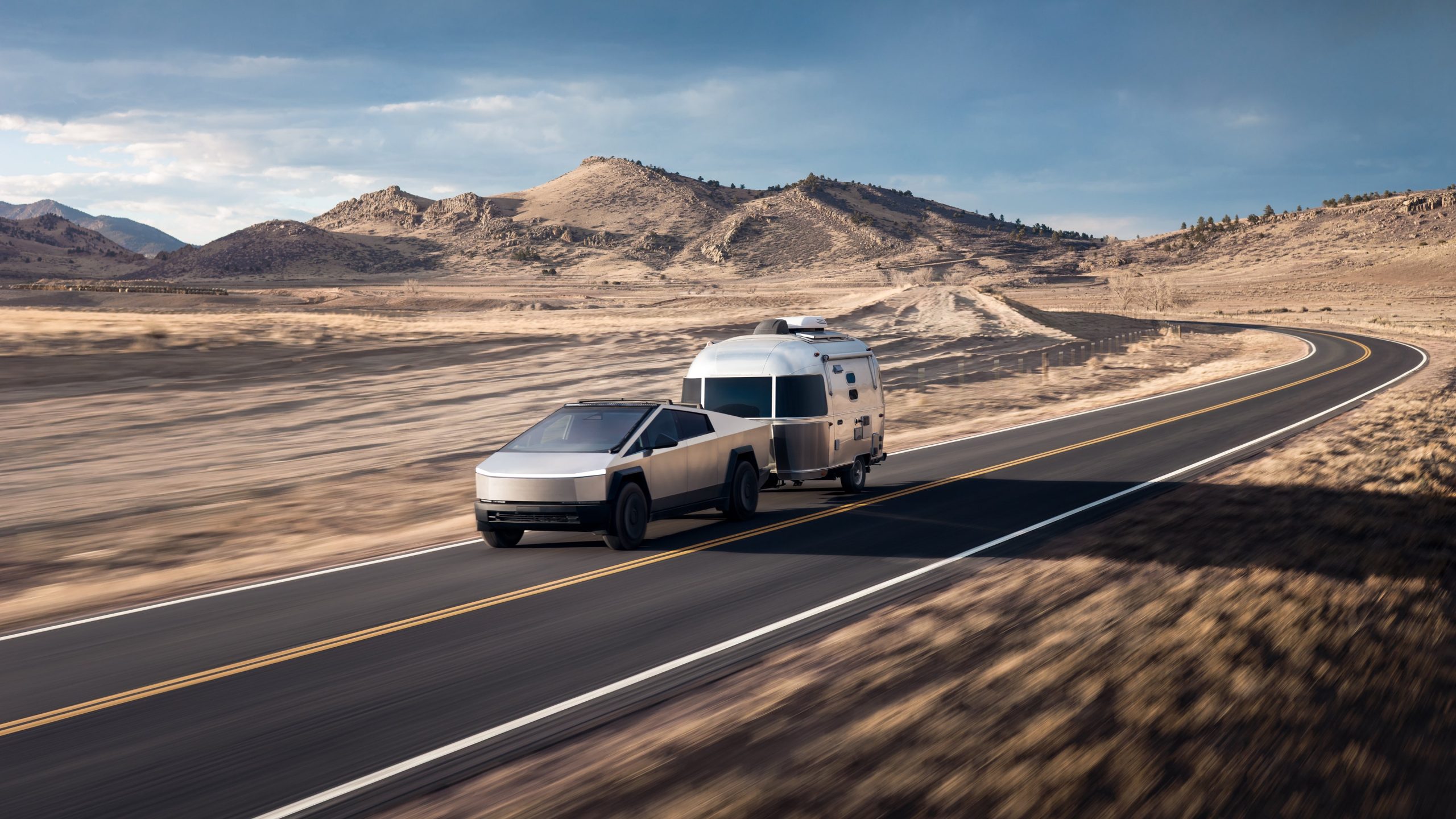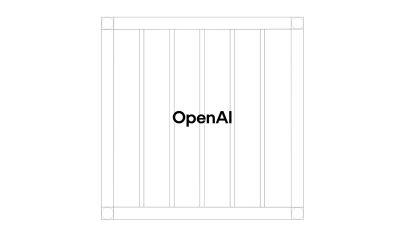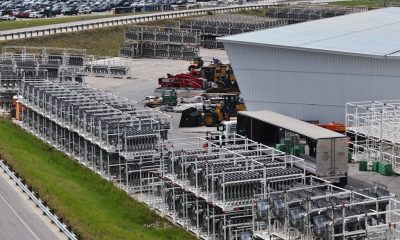News
Tesla released the Cybertruck RWD to make the AWD look like a deal
Cybertruck LR RWD is effectively a $69,990 pickup that does not have 120V and 240V power outlets on its bed or 120V outlets in the cabin.

Tesla released the Cybertruck Long Range Rear Wheel Drive (LR RWD) recently, and it quickly received mixed reactions from the electric vehicle community. While the truck was praised for its long range, many argued that it was far too expensive due to the long list of features that it is missing compared to the Cybertruck All Wheel Drive (AWD), the mid-range variant of the all-electric pickup truck.
A look at the Cybertruck LR RWD’s pricing and features suggests that Tesla designed and priced the vehicle to push more buyers to opt for the Cybertruck AWD instead.
So Much Missing
The Cybertruck LR RWD costs $10,000 less than the Cybertruck AWD, but it is substantially less equipped compared to its mid-range counterpart. While the Cybertruck LR RWD’s slower 0-60 mph time, lower towing and payload capacity, textile seats, and fewer speakers are understandable, missing features such as the lack of air suspension, HEPA filter, and active noise cancellation make the vehicle truly a stripped down version of the all-electric pickup truck.
Considering that it is the most affordable Cybertruck available today, it would be fair to expect the vehicle to be geared for consumers who truly use their trucks for work. However, the Cybertruck LR RWD seems like a pretty expensive and under-equipped work truck, as it is effectively a $69,990 pickup that does not have 120V and 240V power outlets on its bed or 120V outlets in the cabin. It doesn’t even have otherwise basic Cybertruck features like the rear light bar, which is part of the pickup truck’s iconic, futuristic look.
Must Be Cheaper
The long list of missing features from the Cybertruck Long Range RWD has incited a lot of conversations among electric vehicle enthusiasts on social media, with some EV fans stating that the cost of the features that Tesla removed in the LR RWD seem to be worth far beyond $10,000. Others noted that with its (very) stripped-down nature, the Cybertruck Long Range Rear Wheel Drive should have been priced around $55,000, or at least closer to Elon Musk’s previous comments about electric pickup truck prices in the past.
Back in 2019, Elon Musk noted during an interview on the Ride the Lightning podcast that he believes consumers should be able to purchase a decent electric pickup truck for less than $50,000. “You should be able to buy a really great truck for $49k or less,” Musk stated then.
The Cybertruck was ultimately unveiled in November 2019 with a starting price of $39,990. If one were to adjust for inflation, Elon Musk’s sub-$50,000 Cybertruck price estimate would be worth $62,811 today, which is roughly the price of the Cybertruck LR RWD with the federal tax credit. For context, the Cybertruck’s $39,990 base price during its November 2019 unveiling is worth $50,249 today if adjusted for inflation.
A Boost to Cybertruck AWD
One would not be faulted to speculate that Tesla released the Cybertruck Long Range Rear Wheel Drive as a way to encourage customers to purchase the more expensive Cybertruck All Wheel Drive. For just $10,000 more, after all, customers would be getting a substantially better-equipped vehicle with better performance and far more utility.
It remains to be seen how well the Cybertruck LR RWD would sell, though considering its stripped-down nature, there seems to be a chance that the variant would follow the same path as the $35,000 base Model 3 Standard Range RWD, which was briefly sold but eventually retired due to low orders. What the $35,000 Model 3 did, however, was push a lot of sales of the Model 3 Standard Range Plus, which ultimately became one of Tesla’s volume sellers and is still in production today simply as the Model 3 RWD.
News
These Tesla, X, and xAI engineers were just poached by OpenAI
The news is the latest in an ongoing feud between Elon Musk and the Sam Altman-run firm OpenAI.

OpenAI, the xAI competitor for which Elon Musk previously served as a boardmember and helped to co-found, has reportedly poached high-level engineers from Tesla, along with others from xAI, X, and still others.
On Tuesday, Wired reported that OpenAI hired four high-level engineers from Tesla, xAI, and X, as seen in an internal Slack message sent by co-founder Greg Brockman. The engineers include Tesla Vice President of Software Engineering David Lau, X and xAI’s head of infrastructure engineering Uday Ruddarraju, and fellow xAI infrastructure engineer Mike Dalton. The hiring spree also included Angela Fan, an AI researcher from Meta.
“We’re excited to welcome these new members to our scaling team,” said Hannah Wong, an OpenAI spokesperson. “Our approach is to continue building and bringing together world-class infrastructure, research, and product teams to accelerate our mission and deliver the benefits of AI to hundreds of millions of people.”
Lau has been in his position as Tesla’s VP of Software Engineering since 2017, after previously working for the company’s firmware, platforms, and system integration divisions.
“It has become incredibly clear to me that accelerating progress towards safe, well-aligned artificial general intelligence is the most rewarding mission I could imagine for the next chapter of my career,” Lau said in a statement to Wired.
🚨Optimistic projections point to xAI possibly attaining profitability by 2027, according to Bloomberg's sources.
If accurate, this would be quite a feat for xAI. OpenAI, its biggest rival, is still looking at 2029 as the year it could become cash flow positive.💰 https://t.co/pE5Z9daez8
— TESLARATI (@Teslarati) June 18, 2025
READ MORE ON OPENAI: Elon Musk’s OpenAI lawsuit clears hurdle as trial looms
At xAI, Ruddarraju and Dalton both played a large role in developing the Colossus supercomputer, which is comprised of over 200,000 GPUs. One of the major ongoing projects at OpenAI is the company’s Stargate program,
“Infrastructure is where research meets reality, and OpenAI has already demonstrated this successfully,” Ruddarraju told Wired in another statement. “Stargate, in particular, is an infrastructure moonshot that perfectly matches the ambitious, systems-level challenges I love taking on.”
Elon Musk is currently in the process of suing OpenAI for shifting toward a for-profit model, as well as for accepting an investment of billions of dollars from Microsoft. OpenAI retaliated with a counterlawsuit, in which it alleges that Musk is interfering with the company’s business and engaging in unfair competition practices.
Elon Musk confirms Grok 4 launch on July 9 with livestream event
News
SpaceX share sale expected to back $400 billion valuation
The new SpaceX valuation would represent yet another record-high as far as privately-held companies in the U.S. go.

A new report this week suggests that Elon Musk-led rocket company SpaceX is considering an insider share sale that would value the company at $400 billion.
SpaceX is set to launch a primary fundraising round and sell a small number of new shares to investors, according to the report from Bloomberg, which cited people familiar with the matter who asked to remain anonymous due to the information not yet being public. Additionally, the company would sell shares from employees and early investors in a follow-up round, while the primary round would determine the price for the secondary round.
The valuation would represent the largest in history from a privately-owned company in the U.S., surpassing SpaceX’s previous record of $350 billion after a share buyback in December. Rivaling company valuations include ByteDance, the parent company of TikTok, as well as OpenAI.
Bloomberg went on to say that a SpaceX representative didn’t respond to a request for comment at the time of publishing. The publication also notes that the details of such a deal could still change, especially depending on interest from the insider sellers and share buyers.
Axiom’s Ax-4 astronauts arriving to the ISS! https://t.co/WQtTODaYfj
— TESLARATI (@Teslarati) June 26, 2025
READ MORE ON SPACEX: SpaceX to decommission Dragon spacecraft in response to Pres. Trump war of words with Elon Musk
SpaceX’s valuation comes from a few different key factors, especially including the continued expansion of the company’s Starlink satellite internet company. According to the report, Starlink accounts for over half of the company’s yearly revenue. Meanwhile, the company produced its 10 millionth Starlink kit last month.
The company also continues to develop its Starship reusable rocket program, despite the company experiencing an explosion of the rocket on the test stand in Texas last month.
The company has also launched payloads for a number of companies and government contracts. In recent weeks, SpaceX launched Axiom’s Ax-4 mission, sending four astronauts to the International Space Station (ISS) for a 14-day stay to work on around 60 scientific experiments. The mission was launched using the SpaceX Falcon 9 rocket and a new Crew Dragon capsule, while the research is expected to span a range of fields including biology, material and physical sciences, and demonstrations of specialized technology.
News
Tesla Giga Texas continues to pile up with Cybercab castings
Tesla sure is gathering a lot of Cybercab components around the Giga Texas complex.

Tesla may be extremely tight-lipped about the new affordable models that it was expected to start producing in the first half of the year, but the company sure is gathering a lot of Cybercab castings around the Giga Texas complex. This is, at least, as per recent images taken of the facility.
Cybercab castings galore
As per longtime drone operator Joe Tegtmeyer, who has been chronicling the developments around the Giga Texas complex for several years now, the electric vehicle maker seems to be gathering hundreds of Cybercab castings around the factory.
Based on observations from industry watchers, the drone operator appears to have captured images of about 180 front and 180 rear Cybercab castings in his recent photos.
Considering the number of castings that were spotted around Giga Texas, it would appear that Tesla may indeed be preparing for the vehicle’s start of trial production sometime later this year. Interestingly enough, large numbers of Cybercab castings have been spotted around the Giga Texas complex in the past few months.
Cybercab production
The Cybercab is expected to be Tesla’s first vehicle that will adopt the company’s “unboxed” process. As per Tesla’s previous update letters, volume production of the Cybercab should start in 2026. So far, prototypes of the Cybercab have been spotted testing around Giga Texas, and expectations are high that the vehicle’s initial trial production should start this year.
With the start of Tesla’s dedicated Robotaxi service around Austin, it might only be a matter of time before the Cybercab starts being tested on public roads as well. When this happens, it would be very difficult to deny the fact that Tesla really does have a safe, working autonomous driving system, and it has the perfect vehicle for it, too.
-

 Elon Musk1 week ago
Elon Musk1 week agoTesla investors will be shocked by Jim Cramer’s latest assessment
-

 News2 weeks ago
News2 weeks agoTesla Robotaxi’s biggest challenge seems to be this one thing
-

 Elon Musk1 day ago
Elon Musk1 day agoElon Musk confirms Grok 4 launch on July 9 with livestream event
-

 News2 weeks ago
News2 weeks agoWatch the first true Tesla Robotaxi intervention by safety monitor
-

 News5 days ago
News5 days agoTesla Model 3 ranks as the safest new car in Europe for 2025, per Euro NCAP tests
-

 Elon Musk2 weeks ago
Elon Musk2 weeks agoA Tesla just delivered itself to a customer autonomously, Elon Musk confirms
-

 Elon Musk2 weeks ago
Elon Musk2 weeks agoxAI welcomes Memphis pollution results, environmental groups push back
-

 Elon Musk2 weeks ago
Elon Musk2 weeks agoElon Musk confirms Tesla Optimus V3 already uses Grok voice AI


















